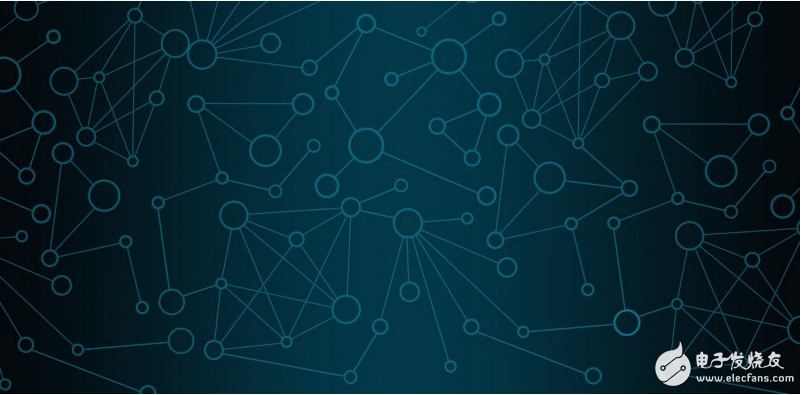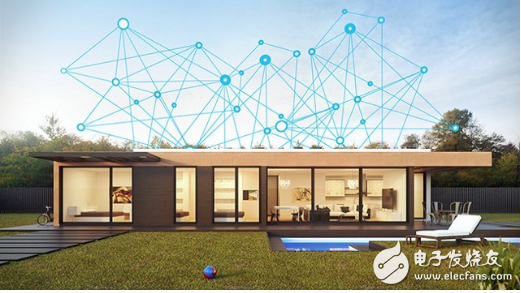Each technology serves the researchers and enthusiasts first, then the merchants and entrepreneurs, and ultimately the public. When this technology can serve the public, we call it mature technology.

"Everyone should have a computer on the table and at home - Bit Gates, 1980."
A few decades ago, Bit Gates said that everyone has a computer at home. If we look back, we have already gone a long way, and now, on average, everyone has more than one computer at home. In addition to computers, in many people's homes, there are smartphones, tablets, smart homes, etc., and strictly speaking, a micro-computer is included in these devices. Therefore, almost every family has more than one computer.
Most of the time, these devices are internally linked and connected to the Internet. With Internet-based storage and cloud storage, these devices can interact with each other and share data with each other. We have seen many people add routers and network storage devices at home to link their devices at home.
Then based on smart home, we have artificial intelligence to help us deal with all kinds of things every day. For example, every morning alexa asks me to get up, put music, tell me the weather, traffic and other conditions.
In an interview with Andrew Key from Consensys, he talked about the current state of blockchain technology. As he said, we still need a few years to make the blockchain use on a large scale. He firmly believes that companies will then rely on the blockchain. We will see many real-world problems that can be solved through the blockchain and do not require any centralized backup system (Plan B). The first wave of massive use of blockchains may be B2B. After that, it may take several years for the blockchain to be used by B2C and directly serve the public.
In addition to the expansion we have heard, performance and stability, there is another dimension for the blockchain to make it available to the public, that is, usability. Blockchains now seem to be a very complex technology, and all math and encryption algorithms are beginning to enter the blockchain, making it a particularly sophisticated technique for laymen. But this is similar to when computers, the Internet, and artificial intelligence came out. For example, back in the 80s, if you wanted to connect different computers on the network, we need to manually save its address to a computer folder. Now, as we know, things have become simpler and different. When a computer is connected to the Internet, it needs to obtain an identity (IP address) on the network through an entire process. Speaking of encryption algorithms, we now need to connect to any network through https, the same concept for the encryption algorithm used in the blockchain. Only the current web browser and server abstract the details. Similarly, in a few years, the blockchain will start to become simpler and easier, because we will also create tools to abstract complex details.
Now let's look at the development of some famous technologies in the past and the current status of the blockchain. I want to try to describe the situation when the blockchain starts to be used by the public in the near future.
In order to portray the future, we need to start now. As I said before, there are already a lot of devices in our home that are connected to each other. In general, we connect all devices to each other through a router and connect them to the Internet using a wireless network. Now let's imagine the blockchain node. We also connect the nodes to the router.

It's as if we have other devices and household items connected directly to the router and then connected to the network. Soon we can also see the blockchain nodes, package them after use, access and use the devices. You don't need to set up your own nodes. The evil is packed in advance, and the nodes are set up so that you can connect to the chain and the network.
At the same time, let's take a look at what this pre-packaged node would look like. Now when we want to set up the Ethereum node, we need to download the Ethereum client on the computer, set up our wallet and account, and then use the GUI to run. If we want to interact with this node, we need to connect it to the dApp. But in the near future, the process we see may be as follows:
Go to the electronics store to find blockchain nodes with different settings packed in advance, buy one and take home to open the package and connect to the power network to set up personal information and network parameters to connect the node and dApp on the phone and computer (just like a mobile phone) Connected to the network, this time will be connected to the node)
After reading these steps, if you still feel illusory, this is normal. Because this is how we accept smart phones, smart TVs and other smart homes. Why can't I accept blockchain nodes?
Just like the current computer, it is also set up in advance by software certificates and specific drivers of the manufacturer. These pre-packaged blockchain nodes can have built-in hardware wallets and network settings. Let's think again, these blockchain nodes will also support the cloud, and then only the required blockchain state will be on the home hardware, and others will be backed up in the cloud, thus saving bandwidth and electricity bills.
Now we can install on the same hardware and run multiple blockchain clients at the same time. Similarly, in these pre-installed blockchain nodes, there will be options to connect different networks. Some obvious/advanced options can be linked to your favorite payment network, identity network, decentralized social network, decentralized market, and more.
Now we can have blockchain nodes at home, connect to other networks and synchronize. Let's see how it is used.
Payment and service
All payments are made through the blockchain node at home. We don't need to connect to several websites and apps to pay for electricity, internet, water bills, etc. These will allow us to enter our own private information without having to centralize the system and mediation (payment channel).
The power provider only needs to provide an address and id, which can be used to pay for electricity. At the next level, the home's smart power counters can be directly connected to the blockchain nodes, which automates and secures payments. Similarly, smart routers can also pay for network charges. In many countries, the use of blockchains to track device usage and payments has begun.
Communication
All important public communications are done by broadcasting over the blockchain network. Blockchain nodes will replace broadcast and television for more secure, certifiable communications, thereby avoiding false messages.
In summary, there are many problems in the blockchain, or because of the blockchain, many problems do not exist. The home node can help confirm that all payments and communications are coming from the beginning.
Identity and certification
Because the blockchain node is connected to the local router, it is also connected to other devices in the home, such as tablet, phone, and so on. Using a multi-party computing key for the blockchain node, you will also be notified on the phone to approve the transaction.
Internet of Things and smart home
Through the router, the blockchain node will also be connected to all smart homes in the home. The coffee machine can provide coffee and milk directly, which will eventually become safer, as the identity of the coffee machine will be registered with the blockchain as you are. And you (you and the coffee machine) need a signature to complete the transaction. The washing machine can pay for detergents.
Blockchain network
In order to serve a variety of cases, a network may not be enough. In the future, there will be a blockchain network, just as the Internet is the connection of various networks. In order to ensure that the blockchains serving different cases can communicate with each other, new standards will emerge in the future, and the internal interaction of the support chain will occur. Family blockchain nodes can support these multi-chain nodes and clients, and all the complex details are abstracted from the use nodes. It's like how we use the Internet today, we have HTTP, TCP/IP, WWW, JSON, etc. to ensure that the network and server interact with each other.
challenge
In order to ensure that the above can finally happen, we need to solve the existing problems of the decentralized system. A technology matures as its interaction becomes seamless and easy to use. Now, as we know, the blockchain has problems with capacity expansion and privacy. People in these communities are actually aware of it, but they need a lot of work to solve them.
in conclusion
This is just an idea of ​​how the blockchain will be used in ordinary people in the future. Depending on how mature our cognition of blockchain is, there will be thousands of different situations. Some experts, after reading the above article, may question the feasibility of the above. But I think the more important thing is to work in the blockchain industry and make it available to the public, just like our computers, networks and artificial intelligence, they can also be used for us, and even many are not technically born. family member.
Feature:
1.Superior uniformity and EV grade safefty LFP battery ;
2.Customized modular and large-scale ESS solution;
3.Reliable safety design and remote real-time monitoring;
4.High cost effective and short delivery duration.
mwh ,ess container, bess, commercial battery,battery container,mega,megawatt,Marine battery
Shenzhen Enershare Technology Co.,Ltd , https://www.enersharepower.com
